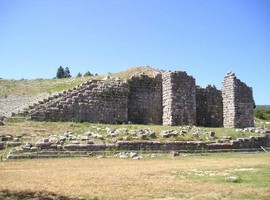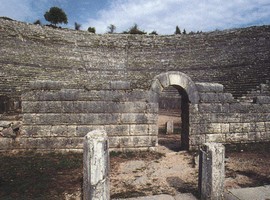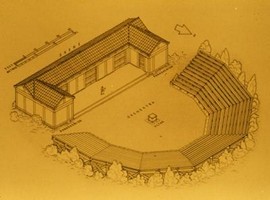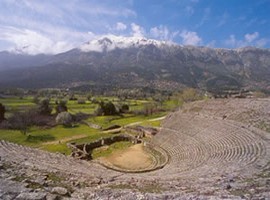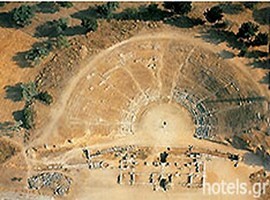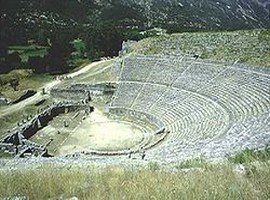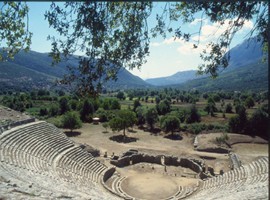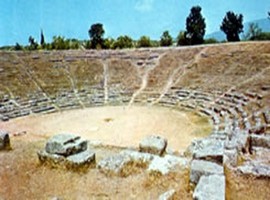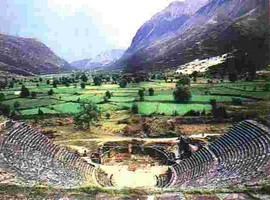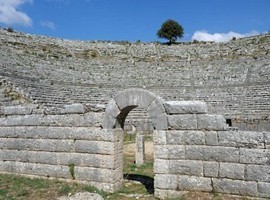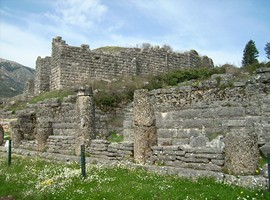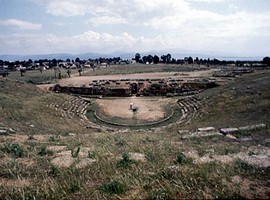A look at the History of Greek Theaters
The prehistoric Greek drama was initiated from Orphic Mysteries in Athens in the era between second and sixth century BC. The drama started during the festivals where people honored their gods. They loved to honor their Gods, so during the festival called ‘‘Dionysian’’ the males used to present songs and perform in plays, where they welcome their God called Dionysus. The drama became popular and showed a positive growth, so in result the performance venues were built to host the theatrical dramas. For the Greeks was also important to be happy, so they desired entertainment and laugh. For this reason, drama writers like Aristophanes wrote comedies which are alive until our days and famous worldwide.
The Greek Theaters – How do they look…?
The hillsides were considered the best sight for the construction of the Greek theaters as slopes provide the natural elevation for terraced seating without the need of extra effort. These theaters were open air, huge and had a capacity to hold twenty thousand people for one show. The base of the theater was build with rocks, row by row. The stairs were often covered with marble and seats were made of stones. The theaters were usually built in semi circle formation and the terrace and portico was kept for the spectators for viewing purpose. This huge structure were the audience sat is called a Theatron. Apart from staging the comedy and tragic dramas, these theaters worked as a platform for the events related to music and poetry. They also served as a forum for formal gathering.
The Three Main Elements of the Greek Theaters
There were three main elements on which the ancient Greek theaters were based on, the orchestra, the scene, and the audience. The Orchestra was the center place where the performances take place. It was usually in circle or rectangle shape. The meaning of scene is tent and it refers to the backstage area. In the central place of the scene was the ‘’thymeli’’ the temple of Dionysus. The scene used to be on the distant side of the Orchestra. It was used to be a temporary building made of wood, where actors or performers dressed up and keep their props and costumes. Later on the scene was turned into a stone building instead of a tent or hut. The last element was Audience, which used to sit in theatric, which was also a huge seating arrangement to accommodate large number of people. People used to get seats according to their social positions and other considerations. So, generally the seats nearby the orchestra were occupied by the council members, then other high status people took their seats and the remaining seats were for general public.
The acoustics of the Ancient Greek Theaters
Modern acoustic studies prove that in the ancient theaters had applied the basic principles which ensure the acoustics, liveliness, clarity and intelligibility of the drama. Something really important was the reinforcement of the voice caused by valid positive sound reflections on elements of theater. The most characteristic sample of the perfect acoustic of the ancient Greek theaters was the Epidaurus Theater. A miracle of the acoustics art. The European Acoustics Association recognized in its latest magazine edition that the Theater is a really special and unique monument of the global heritage. Thousands visitors and locals come every year to try this simple experiment which shows this unique acoustics. If you throw a small coin to the center of the scene, its sound will be heard until the seats to highest point of the theater. You can try it yourself too! You will be really surprised!
A quick review of the Ancient Greek Theaters, the places you have to visit
Theatre of Dionysus
The theatre of Dionysus holds an important place in the history as was the first theater ever constructed on the surface of earth. This oldest Theater of Greece was built on the southern side of the slope of the Acropolis and was constructed around five hundred BC. It was the first place, from where the drama originated. The theater was used to celebrate the festival in the honor of God Dionysus.
The theater of Odeon of Heroes Atticus was constructed in 161BC by Herodes Atticus in the loving memory of his life partner. It is built in the center of Athens. In the beginning, it had a wooden roof and could accommodate five thousand people. When it was constructed, it was mainly used for music concerts and nowadays this theater is famous for hosting The Athens Festival, which is one of the important cultural events in the country of Greece and also many more cultural events like opera and high quality theatrical dramas.
The Delphi Theater was constructed in 4th century BC, on a hill near by the temple of Apollo. The theater was initially built from the Parnassus limestone, but later was remodeled many times. It has a spectacular seating arrangement that gives the audience a spectacular view of the valley. It can accommodate five thousand people easily.
The Theatre of Epidaurus is a well known theater in Greece, as it is one of the well preserved theaters among the ancient theaters. It was designed and built in 4th century BC by Polycleitus the Younger. It is a huge theater with a capacity to accommodate fifteen thousand spectators. It is said to be the most beautiful theater on earth as it provides stupendous acoustic response and perfect scenic proportion of its space. Every summer plenty of shows of ancient dramas take place which attract thousands of visitors.
